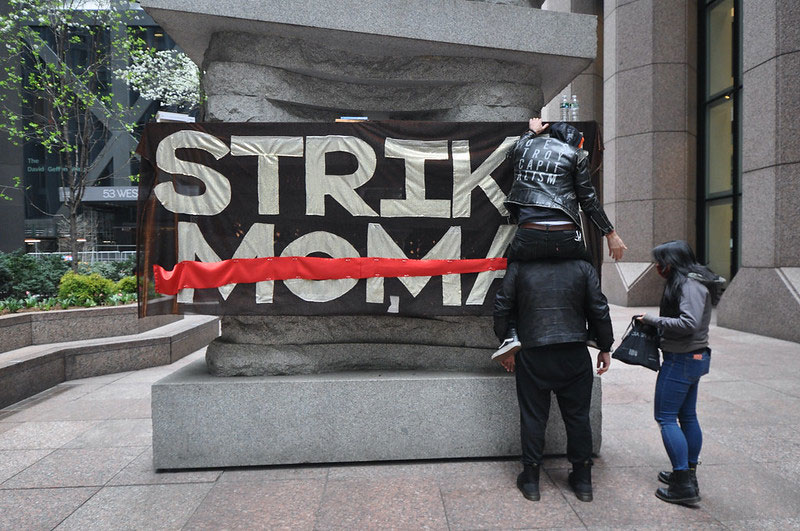| Subscribe via E-Mail | Subscribe via RSS | |
Submit a News Item |
![]() A Hard Winter in Colorado
A Hard Winter in Colorado
Nov 9, 2009; Denver Post | In Denver access to nonprofit services is more difficult as revenue streams dry up both for nonprofits and the people they serve. In one story on Sunday, November 8, a service dog agency is able to deploy only half of the dogs they had hoped. The agency cited a 32% reduction in donations as the reason. Meanwhile while the resources are there for weatherization through stimulus funding the press of need is so great that waiting lists are growing at unprecedented rates. The result? Many low-income people may not have their houses weatherized until the season is nearly over. Meanwhile in the Pikes Peak Region four agencies serving disabled people are bringing a long-in -the-works merger to fruition at a particularly strategic time. These three stories have clear human toll attached and they are just three of many. It may be a hard winter.—Ruth McCambridge
![]() Commentary: Critiquing Philanthropy
Commentary: Critiquing Philanthropy
Nov 9, 2009; Wall Street Journal | Pablo Eisenberg, as usual, does not mince words when he makes nine recommendations for improving philanthropy. The problem in charitable giving, he says, is that current foundation grantmaking, “neither meets the needs of our charitable organizations nor addresses some of our most urgent public needs.” Among other suggestions, Eisenberg suggests foundations increase payout, simplify grantmaking and reporting, increase general operating and multi-year grants and increase public accountability. Eisenberg also mentions the trend for community newspapers to convert to a nonprofit model as “an opportunity for big foundations and wealthy individuals not only to maintain the accountability of nonprofits but also to ensure the continuity of quality journalism and an informed citizenry.” This article and its corresponding audio also highlights the very low proportion of philanthropic dollars that go to groups serving low-income people and organizations, arguably those groups that serve populations that need it most. He connects this point to the make up of private foundation board members, which as no surprise, rarely makes up these disenfranchised communities and is predominantly white, upper middle class and male.—Kristin Barrali
![]() Finding the Silk Purse: Some nonprofits have managed to find new opportunities in difficult economic times
Finding the Silk Purse: Some nonprofits have managed to find new opportunities in difficult economic times
Nov 9, 2009; Wall Street Journal | This piece from the WSJ Philanthropy Report collection is one that you’ll see in various forms in lots of newspapers, including those of the nonprofit sector itself. You know the type, “the recession is good for nonprofits,” “the nonprofit sector will be better coming out of the recession,” “charities that survive the recession will be smarter, stronger, more adaptable . . .” and so on. This one pitches nonprofits “taking advantage” of the economic crisis. This hodge-podge article lists and misdescribes some examples of advantage-taking, for example, citing Habitat for Humanity’s acquisition of homes on the cheap due to foreclosure, with the recognition that rehabbing homes is less expensive than building new. But wait, the WSJ then notes that other Habitat rehabs are facing unanticipated time and cost problems. So what’s the score, Journal? The reality is that sometimes, it’s crucial to neighborhood restorations to rehab the existing stock rather than replacing old homes with cheaply-built new ones (and when there’s a lot of vacant inventory, it makes little sense to add new homes to the inventory when existing homes can’t be sold). But given the foreclosure problem, many foreclosed homes that are not sold at auctions but returned to bank ownership (so-called REO homes) are in tough shape and are tough rehab challenges for nonprofit developers like Habitat—and for-profit builders as well. But they need to be done. That’s not taking advantage of the recession, but Habitat (in this case in the Twin Cities) stepping to the plate to help stabilize and restore foreclosure-ravaged neighborhoods. The other examples of “taking advantage?” The author cites one charity’s being open with donors about the impact of the economy on its programs and fundraising. Duh! It’s called truth-telling, and not dumbing down the donor-donee relationship. Another charity, a museum, came up with a strategy of getting big donors to contribute enough to eliminate admission fees and marketing memberships for access to special exhibitions. Another changed its annual charity ball to an online fundraiser, earning some $7,000 more because of the elimination of the event expenses. As the museum director noted, “The idea of going to a charity ball during a recession is a little bit questionable.” In all of the cases, it sounds like the charities were simply dealing with the reality of functioning or responding to need in a recession. It’s no fun and not a time for chortling.—Rick Cohen
Sign up for our free newsletters
Subscribe to NPQ's newsletters to have our top stories delivered directly to your inbox.
By signing up, you agree to our privacy policy and terms of use, and to receive messages from NPQ and our partners.
{source}
[[script language=”javascript” type=”text/javascript”
src=”http://feeds2.feedburner.com/nonprofitquarterly/dailydigest?format=sigpro”]]
[[/script]]
{/source}












